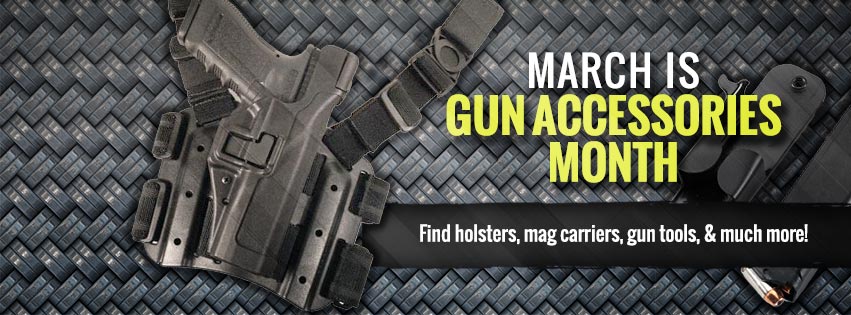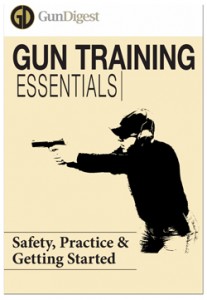Modern Gun School Special Content
Gear Up Now! Check out our great deals on top accessories from top brands!
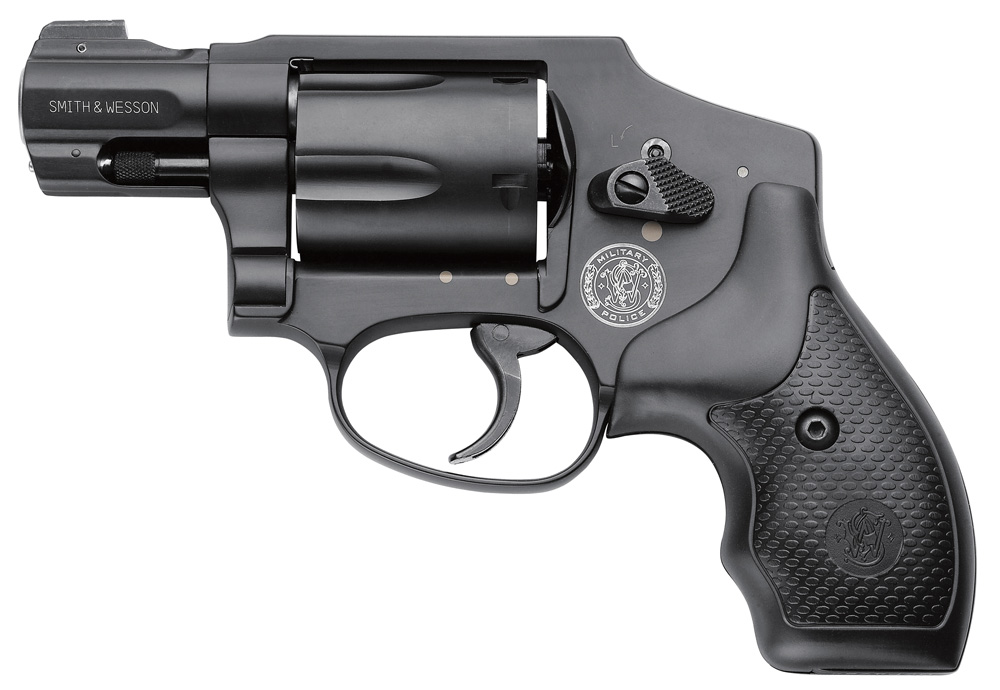
By Dick Jones
The author puts three great compact carry revolvers through a little side-by-side testing.
We all understand the stopping power of the firearm can have a profound effect on the number of rounds required to stop a determined assailant.
Certainly, most would agree that a single, well-placed, highly effective round would be more likely to stop a bad guy than one from a .22 rimfire. Because of this, I advocate carrying the most potent firearm you can handle. My choice of a five-shot compact revolver is the lightest and most powerful I can obtain.
Very Worthy Carry Revolvers
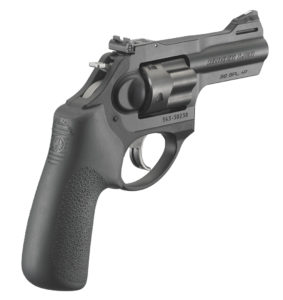
Three such Noisy Crickets are the Ruger LCRx and the Charter Arms Undercover Lite, both chambered in .38 Special +P, and the Smith & Wesson 340 M&P chambered for the .357 Magnum round. I chose these guns for this comparison because they’re both powerful and lightweight, and have excellent triggers that are light and manageable.
I chose the .357 in the S&W because it represents, as do the other guns, the highest power-to-weight ratio in their product line. Other companies make similar guns in .357, but those guns are heavier. The Charter Arms Mag Pug and the LCR both are available in .357, but both are based on heavier frames, the extra mass taking them up and into another weight class.
All three guns are similar in concept. The S&W is an updated, lightweight version of the time-honored Model 36 Chief’s Special, using the small J frame and made of lightweight Scandium alloy with a stainless steel cylinder. The 340 M&P is the double-action only, shrouded hammer version. At 13.3 ounces, it’s a powerful lightweight with a good trigger pull and unobtrusive, yet it has effective sights consisting of an integral U-notch rear and a pinned, round tritium front sight.
The Charter Undercover Lite is a lightweight version of the standard Undercover I carried for about 20 years. It served hard duty, having the undesired experience of going swimming twice, not by choice. It traveled thousands of miles, endured minimal care and never even thought of malfunctioning. It still serves my son-in-law faithfully. The Undercover Lite has a lighter trigger pull, though not as smooth as the other two guns. It has a machined-in ramp front and the same integral notch rear sight as the other guns.
The Ruger LCRx was chosen primarily because it’s new in the Ruger line this year. While the S&W and Charter Arms designs have a long and storied history, the Ruger is a relative newcomer. The LCR product line was introduced in 2009. In spite of being a newcomer, the LCR series has received a warm reception in the world of personal protection revolvers. My sample version weighed the exact same amount on my scales as the S&W at 13.3 ounces, both guns being a half-ounce heavier than the Undercover.
Learn Gun Safety Rules, Practice Drills and Loading Tips
This download will help you know your personal defense weapon inside and out—and is a good primer to study before attending an NRA basic pistol course. Learn the 4 cardinal rules of safe gun handling, dry practice, live fire practice and handgun loading techniques to take your personal defense firearms training to the next level! [form id=”194024″]
Related Video:
The Ruger uses less conventional materials to reduce overall weight. The functioning part of the LCR frame is aluminum, but the grip frame and trigger guard are of polymer. A conventional pinned ramp front sight mates up with an integral notch rear sight providing adequate sights for a short-range carry gun. The Ruger has a less traditional look with the cylinder sculpted for weight reduction rather than the more conventional fluting on the Smith.
With .38 Special +P and .357 Magnum chambers, and weighing less than 14 ounces, these guns generate levels of recoil that’s not for the faint of heart. They’re not the kind of gun you want to burn a lot of defense level ammunition through.
Recoil, though stout, is manageable. I’m a mid- to back-of-the-pack guy at an action shooting event, and I could manage five shots into the A zone of an IDPA target at seven yards within four seconds, with both .38s using Remington Golden Sabre defense ammunition, though I lost an additional second with the .357 S&W.
While there’s room for argument that follow-up shots would take more time with such a powerful combination, the most important shot is the first and a well-placed shot from a +P .38 or .357. Even one with a short barrel should discourage even the most determined attacker. And while we’re on the subject, yes, I do know a 2-inch .357 isn’t as powerful as one with a 6-inch barrel, but it’s considerably more powerful than a .38 Special with a 2-inch barrel.
Of course, there are guns with more weight that are easier to handle than these super light thumpers, but the primary issue with civilian everyday carry is comfort, and the plain fact is that you’ll carry the gun far more often than you’ll shoot it. For a civilian to use deadly force, there must be a real threat of loss of life, serious bodily harm or sexual assault. Under those conditions, the defender won’t be likely to remember feeling any recoil at all.
Seven-Yard Standard
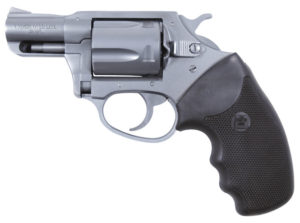
In teaching the North Carolina Certification, our curriculum requires a discussion of the seven-yard standard of the Tueller drill, involving an assailant without a firearm.
Though civilians using firearms for defense are almost never criminally charged, most defense with a firearm eventually involves a lawsuit, and shooting an assailant without a gun at ranges of less than seven yards will put the defender in a bad position in a civil suit. Having said all this, all three guns tested delivered quarter-sized groups at seven yards, more than enough accuracy for 99 percent of all civilian/aggressor confrontations.
Accuracy levels of guns like this are more dependent on your ability to achieve good sight alignment and manage the trigger than on the actual accuracy capability of the gun and ammunition. Recently, I did a video with Chris Cerino, of Top Shot fame, and Chris hit a 12×16-inch target on the third shot double-action at 100 yards with a 2-inch S&W .38.
A couple of years back, I shot a 25-yard, five-shot group with the S&W 637 I was carrying at the time. I shot the group in low light, using a Crimson Trace grip laser rather than the sights on the gun. Off a sandbag, the 2-inch barreled belly gun produced a 3-inch group, centered in the target.
The average distance in defensive shootings is generally agreed to be less than three yards; anything beyond seven is rare indeed.
Related Video:
Adding a laser contributes both to low light capability and accuracy, though the laser should be set to be below the shooter’s line of sight for practice purposes. Lasers are great and the reliability levels are spectacular, but depending solely on a battery in a life or death situation might not be the best practice. Of course, grip laser systems are available for all three guns tested.
It still makes sense to carry ammunition for a possible reload, and reloading should be a part of your training exercises and drills. Speed loaders and speed strips are assets in fast loading, and they make the extra ammunition less fumble proof, an important factor when your life is in danger. Since the extractor rod is shorter on the 2-inch guns, making sure ejected rounds clear the gun is important.
The ejector stroke on the Ruger is .656, compared to .618 on the Smith and .616 on the Undercover, but all three guns require a strong ejection stroke with the muzzle pointed skyward to assure that brass clears the chambers. Even then there’s a possibility of a case or two needing removal.
Between these three guns, there’s no bad choice. Your wise choice depends more on your product preference than on quality of features. I carry the S&W because I like the .357 round. I admit it’s hairy to shoot, but I manage it just fine.
My wife carries a Charter because they make it in pink. The Ruger is as good as either, just a little different. Yes, a five-shot revolver gives up magazine capacity and speed of reloading, but is as reliable as a hammer and offers a lot of power in a small package. In spite of the clichéd name, the snub-nose .38 is still a viable choice.
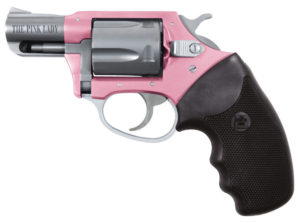
Ruger LCRx
.38 Special+P
5 rounds
1.875 in.
U-notch
Aluminum & polymer
6.50 in.
4.50 in.
13.5 oz.
Crimson Trace
$545
ruger.com
Charter Arms Undercover Lite
.38 Special+P
5 rounds
2 in.
U-notch
Aluminum
6.4 in.
4.25 in.
12 oz.
Crimson Trace
$410
charterfirearms.com
S&W 340 M&P
.357 S&W
5 rounds
1.875 in.
U-notch
Scandium alloy
6.31 in.
4.375 in.
13.3 oz.
Crimson Trace
$869
smith-wesson.com
This article appeared in the Spring 2015 Concealed Carry issue of Gun Digest the Magazine.
Related Video:
Also Check Out:
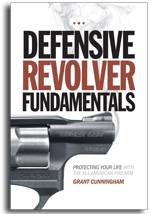 Defensive Revolver Fundamentals by Grant Cunningham. Click here to get your copy.
Defensive Revolver Fundamentals by Grant Cunningham. Click here to get your copy.

